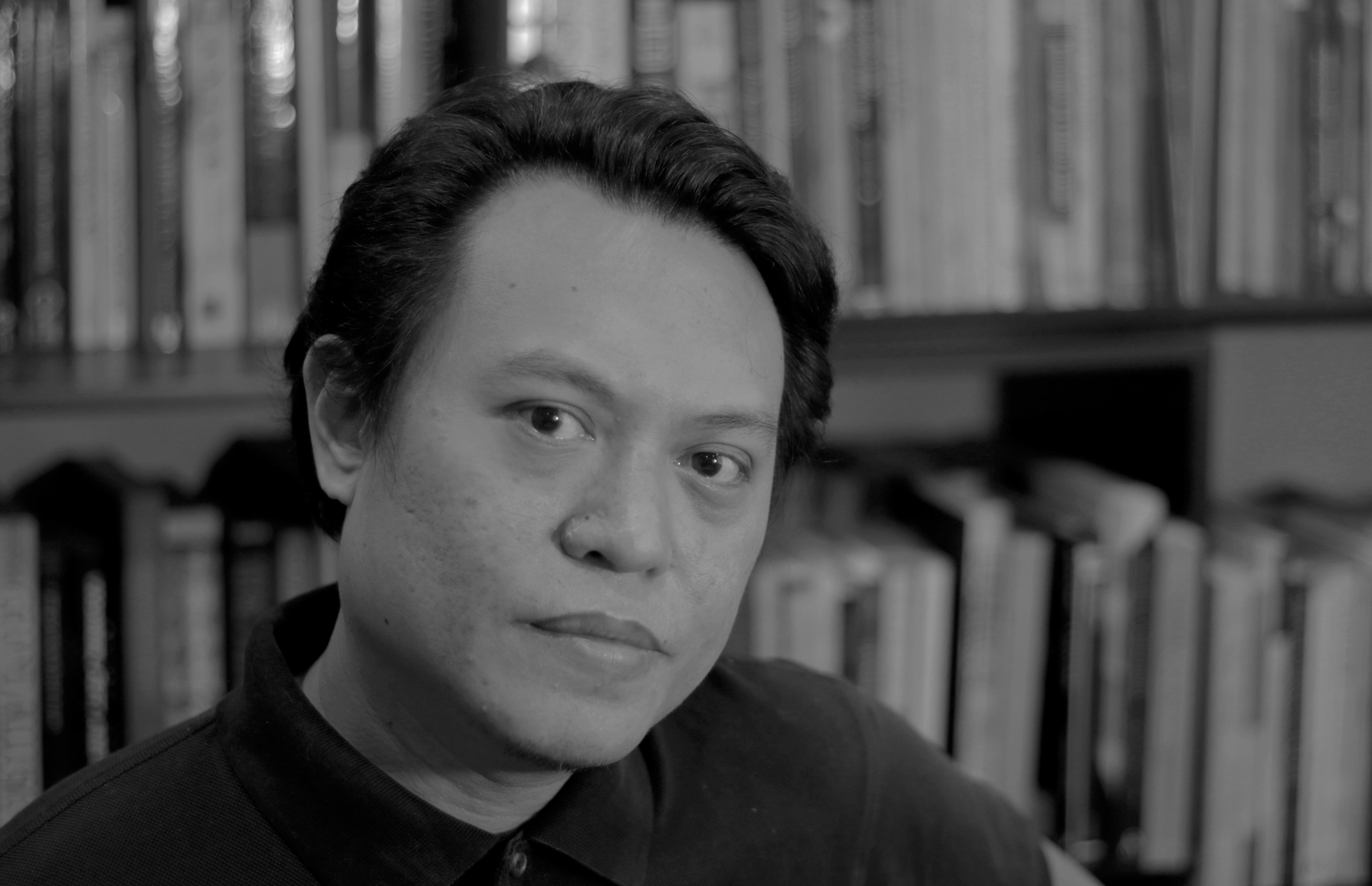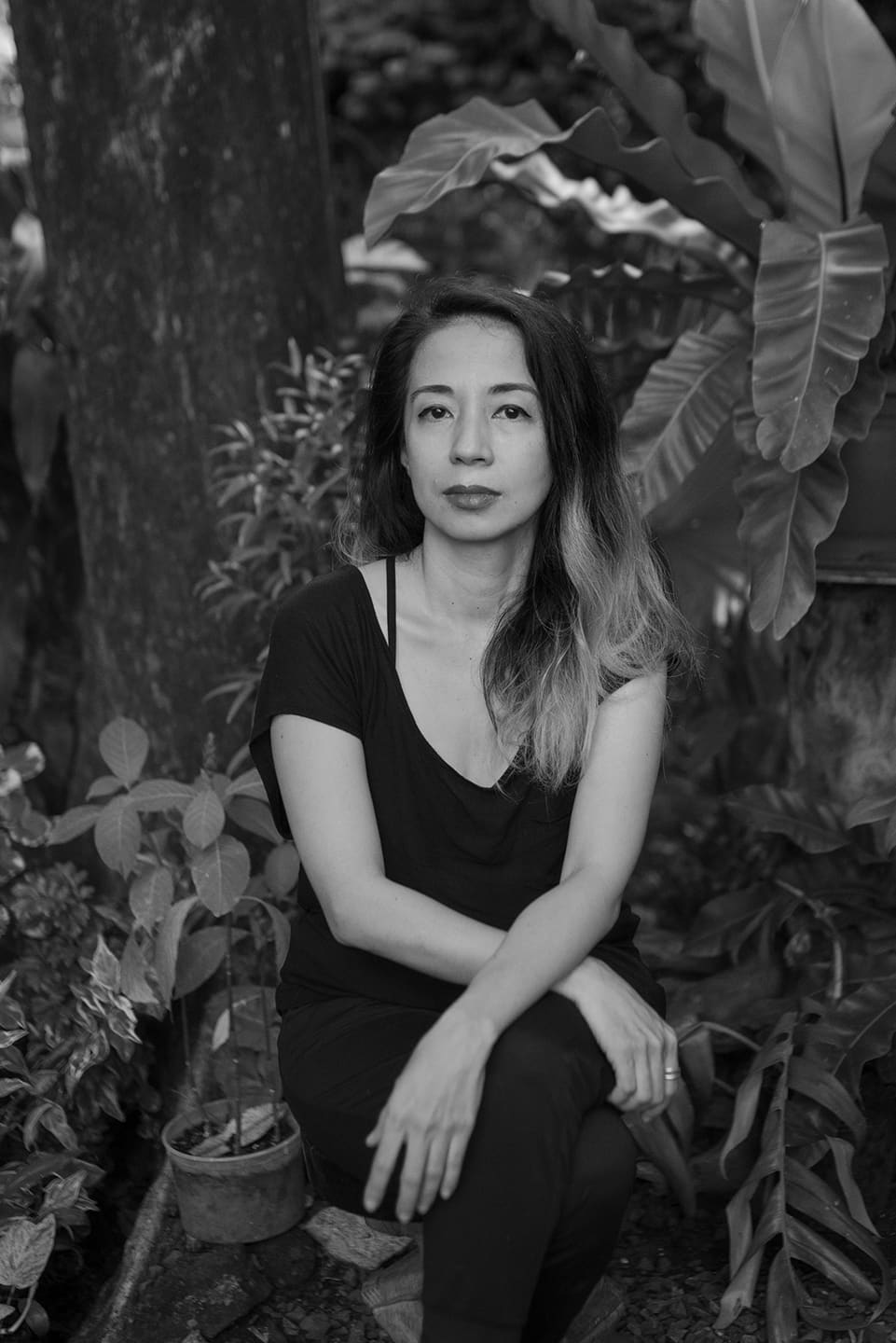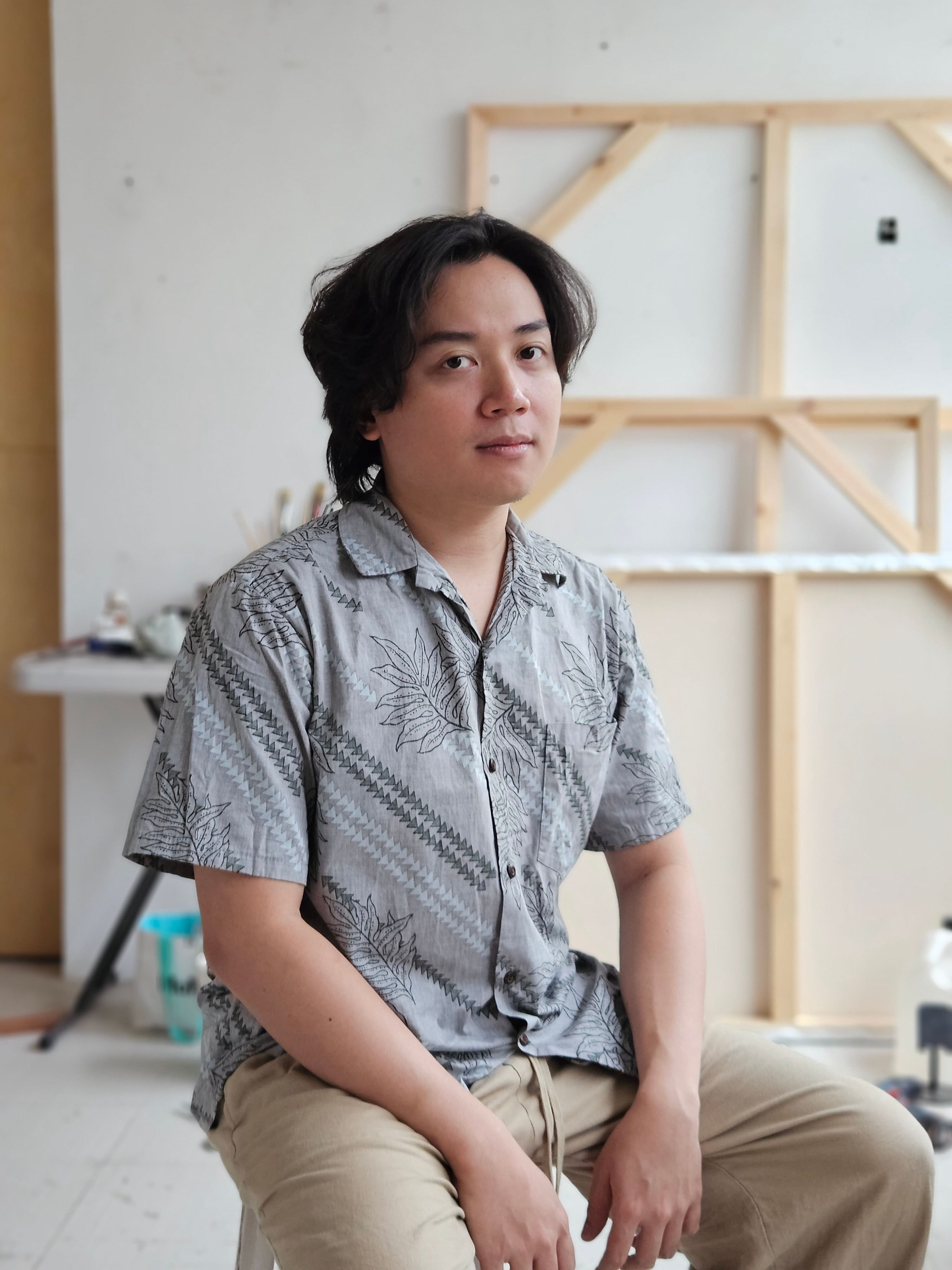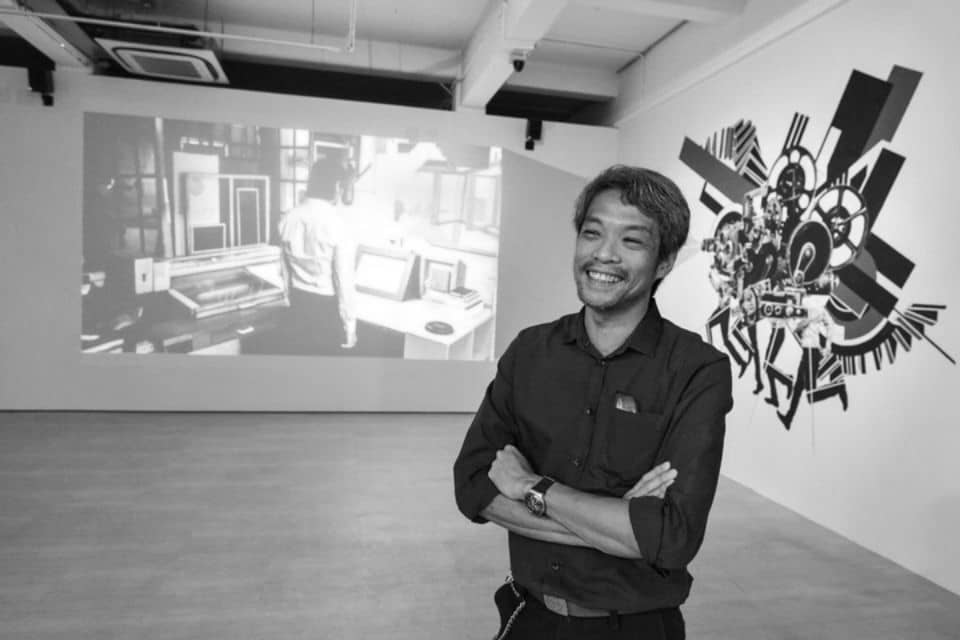Curator Cocoy Lumbao and Video Room Artists on Collaborating With ALT Philippines
ADVERTISEMENT

Welcome, Kapamilya! We use cookies to improve your browsing experience. Continuing to use this site means you agree to our use of cookies. Tell me more!
Curator Cocoy Lumbao and Video Room Artists on Collaborating With ALT Philippines
Janelle Roa Cabrera-Paraiso
Published Feb 21, 2024 06:07 PM PHT
|
Updated Feb 22, 2024 12:14 PM PHT
When asked what his craft is about, ALT Philippines’ Video Section curator Cocoy Lumbao said, running through his duties as a teacher, “First, it was really for my students—to encourage them to have their own shows or at least to try to test the reception on their works, and to have a public audience early on.”
When asked what his craft is about, ALT Philippines’ Video Section curator Cocoy Lumbao said, running through his duties as a teacher, “First, it was really for my students—to encourage them to have their own shows or at least to try to test the reception on their works, and to have a public audience early on.”
He likened curating to playing pretend, constantly loving the job while juggling his writing commitments. His work first began in the form of artist statements and art exhibition notes, and eventually branched out into bigger ideations and iterations. Now at the helm of a new group show, Cocoy is gearing for exciting endeavors.
He likened curating to playing pretend, constantly loving the job while juggling his writing commitments. His work first began in the form of artist statements and art exhibition notes, and eventually branched out into bigger ideations and iterations. Now at the helm of a new group show, Cocoy is gearing for exciting endeavors.
As the curator of Video Room, ALT Philippines’ official Video Section, Cocoy captured and gathered works of great artists in the Philippines in hopes of advancing video as a valid form of art. “It has become a format that is very familiar yet I think, to a degree, not much explored,” he floated.
As the curator of Video Room, ALT Philippines’ official Video Section, Cocoy captured and gathered works of great artists in the Philippines in hopes of advancing video as a valid form of art. “It has become a format that is very familiar yet I think, to a degree, not much explored,” he floated.
“The ratio of its abundance and the exploration is not really close, that’s why we put it in an artistic context like art fairs and art galleries,” Cocoy told Metro.Style. “We also try to examine the form. It brings out certain possibilities. That is what is exciting.”
“The ratio of its abundance and the exploration is not really close, that’s why we put it in an artistic context like art fairs and art galleries,” Cocoy told Metro.Style. “We also try to examine the form. It brings out certain possibilities. That is what is exciting.”
ADVERTISEMENT
 Cocoy Lumbao ALT Philippines
Cocoy Lumbao ALT Philippines
 Cocoy Lumbao ALT Philippines
Cocoy Lumbao ALT Philippines Throughout the years, according to Cocoy, the yield of videos and moving images aren’t much valued in the arts market, although he is positive that there is a plethora of possibilities with the format. The plastic arts can be appreciated in art fairs and art festivals for sure, but smartphones are also everywhere and accounts on social media are spreading like wildfire.
Throughout the years, according to Cocoy, the yield of videos and moving images aren’t much valued in the arts market, although he is positive that there is a plethora of possibilities with the format. The plastic arts can be appreciated in art fairs and art festivals for sure, but smartphones are also everywhere and accounts on social media are spreading like wildfire.
The whole landscape of the digital space is definitely a good back-up, giving video and its relevant versions a shot at success. “It’s different from working with static works, paintings, and sculptures. When you’re looking at it, there’s a lot of things to consider—the lighting and then sounds,” the educator-artist explained.
The whole landscape of the digital space is definitely a good back-up, giving video and its relevant versions a shot at success. “It’s different from working with static works, paintings, and sculptures. When you’re looking at it, there’s a lot of things to consider—the lighting and then sounds,” the educator-artist explained.
Innovating the show was indeed a struggle at first, but Cocoy’s forward-thinking mindset was a true gem. Of course, he grappled with challenges, but it is through his beliefs that he was able to acknowledge the upsides and the downsides of the upcoming showcase. “The look is more dynamic. With the painting, you can always stare and move on to the next,” he said.
Innovating the show was indeed a struggle at first, but Cocoy’s forward-thinking mindset was a true gem. Of course, he grappled with challenges, but it is through his beliefs that he was able to acknowledge the upsides and the downsides of the upcoming showcase. “The look is more dynamic. With the painting, you can always stare and move on to the next,” he said.
“In videos, you need a certain kind of space to move on to the next because it’s really dynamic. The frames, the effect, and the brightness are changing,” Cocoy made sense of it, mentioning that the space for ALT, too, is one daredevil. “This space is really challenging; it’s not as spacious as we would want it to be.”
“In videos, you need a certain kind of space to move on to the next because it’s really dynamic. The frames, the effect, and the brightness are changing,” Cocoy made sense of it, mentioning that the space for ALT, too, is one daredevil. “This space is really challenging; it’s not as spacious as we would want it to be.”
In the same vein, Video Room’s Kiri Dalena, Vic Balanon, and Miguel Lorenzo Uy spoke of their thoughts on making use of video as an ultimate medium. “What’s fulfilling about this medium is it’s already so common, but then, the way we use it is not yet that [recognized]. We haven’t really pushed all of the many possibilities that there are,” documentarist-filmmaker Kiri Dalena declared.
In the same vein, Video Room’s Kiri Dalena, Vic Balanon, and Miguel Lorenzo Uy spoke of their thoughts on making use of video as an ultimate medium. “What’s fulfilling about this medium is it’s already so common, but then, the way we use it is not yet that [recognized]. We haven’t really pushed all of the many possibilities that there are,” documentarist-filmmaker Kiri Dalena declared.
ADVERTISEMENT
Frame-by-frame animator and visual artist Vic Balanon also spelled out why he is attuned to creating videos. “Interesting kasi ang video, e, ’no? Unlike the plastic arts, it’s called plastic arts because they’re concrete. We can touch them. I guess videos are more akin to life, ’di ba?” Vic claimed.
Frame-by-frame animator and visual artist Vic Balanon also spelled out why he is attuned to creating videos. “Interesting kasi ang video, e, ’no? Unlike the plastic arts, it’s called plastic arts because they’re concrete. We can touch them. I guess videos are more akin to life, ’di ba?” Vic claimed.
Artist Miguel Lorenzo Uy, who utilizes an array of materials and art media, has a special approach to the show, too. He walked us through it, “Naiisip ko sa video pieces ko, para silang mga props sa film, which is like reality. Kapag video [kasi], in a way, kailangan mong tapusin ’yung buong sequence.”
Artist Miguel Lorenzo Uy, who utilizes an array of materials and art media, has a special approach to the show, too. He walked us through it, “Naiisip ko sa video pieces ko, para silang mga props sa film, which is like reality. Kapag video [kasi], in a way, kailangan mong tapusin ’yung buong sequence.”
 Kiri Dalena Kimberly Dela Cruz
Kiri Dalena Kimberly Dela Cruz
 Kiri Dalena Kimberly Dela Cruz
Kiri Dalena Kimberly Dela Cruz As to what they are trying to communicate to the audience, Kiri clued us in on her first collaboration with ALT Philippines. “Wala naman akong expectation that people will really stop to really complete the viewing, pero I’m wondering how long people will watch or listen,” she fathomed. “In fact, I’m interested to see benches where people will stay to watch and tambay in the space. Maybe this is also a test of how long people will watch or will stop.”
As to what they are trying to communicate to the audience, Kiri clued us in on her first collaboration with ALT Philippines. “Wala naman akong expectation that people will really stop to really complete the viewing, pero I’m wondering how long people will watch or listen,” she fathomed. “In fact, I’m interested to see benches where people will stay to watch and tambay in the space. Maybe this is also a test of how long people will watch or will stop.”
Miguel, meanwhile, is hopeful of how his medium will fare in the fair. “For me, gusto ko na ’yung audience [ko will] think about their life through the lens of the art that they will see and experience.”
Miguel, meanwhile, is hopeful of how his medium will fare in the fair. “For me, gusto ko na ’yung audience [ko will] think about their life through the lens of the art that they will see and experience.”
Cocoy Lumbao, lastly, laid down what his expectations are. “I think the most important thing is how they will take in video as an art form. The main takeaway that I want to see is how it will fare in the market or in the commercial space or at least in the context of an art fair,” he expounded.
Cocoy Lumbao, lastly, laid down what his expectations are. “I think the most important thing is how they will take in video as an art form. The main takeaway that I want to see is how it will fare in the market or in the commercial space or at least in the context of an art fair,” he expounded.
ADVERTISEMENT
 Miguel Lorenzo Uy ALT Philippines
Miguel Lorenzo Uy ALT Philippines
 Miguel Lorenzo Uy ALT Philippines
Miguel Lorenzo Uy ALT Philippines  Vic Balanon CNN Philippines
Vic Balanon CNN Philippines
 Vic Balanon CNN Philippines
Vic Balanon CNN Philippines “[The objective is for them to see] the emergence of other players, to see other players come in, to see more diverse approaches to the fair,” he went on, dreaming of Video Room’s positive impact on people. “The Video Room is also sort of like a deviation from the usual. I think video has a place there. It’s not just always paintings and sculptures and other things that you would want to see in your living room,” the curator concluded.
“[The objective is for them to see] the emergence of other players, to see other players come in, to see more diverse approaches to the fair,” he went on, dreaming of Video Room’s positive impact on people. “The Video Room is also sort of like a deviation from the usual. I think video has a place there. It’s not just always paintings and sculptures and other things that you would want to see in your living room,” the curator concluded.
Scroll down for more of our Q&A session:
Please briefly introduce yourself and describe the work that you do.
Kiri: “I’ve been using videos for a long time—beginning with making documentary films and even earlier than that, making short films. My works recently are in white boxes, in galleries, but I also make works which are more for human rights.
Kiri: “I’ve been using videos for a long time—beginning with making documentary films and even earlier than that, making short films. My works recently are in white boxes, in galleries, but I also make works which are more for human rights.
At Mowelfund Film Institute, du’n ko unang nakita ’yung works ni Vic [Balanon]. I remember, ’pag animators talaga, back then, we were really already astounded by their works. That’s how I also started, because I didn’t study filmmaking and fine arts. To actually practice and to build my own voice, I did enroll in summer workshops at the Mowelfund Film Institute and at the time, I focused on cinematography but with a creative slant—meaning hindi classical documentary. I would say that instead of beginning in school, I started in this community.”
At Mowelfund Film Institute, du’n ko unang nakita ’yung works ni Vic [Balanon]. I remember, ’pag animators talaga, back then, we were really already astounded by their works. That’s how I also started, because I didn’t study filmmaking and fine arts. To actually practice and to build my own voice, I did enroll in summer workshops at the Mowelfund Film Institute and at the time, I focused on cinematography but with a creative slant—meaning hindi classical documentary. I would say that instead of beginning in school, I started in this community.”
Miguel: “’Yung main interest ko sa art practice ko, I guess, is light—the metaphor of light, or ’yung science behind light. As the years went by, napunta ako sa digital stream and eventually, napunta rin sa moving image. Since bata ako, mahilig na akong mag-drawing. Sure na ako na Fine Arts ’yung ipu-pursue ko talaga. Na-develop ’yung mga sensibilities ko with regards to photography, video, coding, mga animation rin.”
Miguel: “’Yung main interest ko sa art practice ko, I guess, is light—the metaphor of light, or ’yung science behind light. As the years went by, napunta ako sa digital stream and eventually, napunta rin sa moving image. Since bata ako, mahilig na akong mag-drawing. Sure na ako na Fine Arts ’yung ipu-pursue ko talaga. Na-develop ’yung mga sensibilities ko with regards to photography, video, coding, mga animation rin.”
Vic: “Hindi ako nag-formal education in Fine Arts, pero when I got interested into the arts in general, gusto ko talagang maging filmmaker, so kumuha ako ng mga workshops sa Mowelfund na film and animation.”
Vic: “Hindi ako nag-formal education in Fine Arts, pero when I got interested into the arts in general, gusto ko talagang maging filmmaker, so kumuha ako ng mga workshops sa Mowelfund na film and animation.”
ADVERTISEMENT
Please describe your creative process when actualizing a project or an artwork.
Cocoy: “I foremost consider myself as a writer; secondary, as a visual artist. So these concepts, they start from written ideas and then later on, I try to incorporate them in some of the things that I do. If I am doing video as an artist, I incorporate those written ideas to what I have.
Cocoy: “I foremost consider myself as a writer; secondary, as a visual artist. So these concepts, they start from written ideas and then later on, I try to incorporate them in some of the things that I do. If I am doing video as an artist, I incorporate those written ideas to what I have.
When it comes to burnout, I switch from form to form. If I’m doing a writing project now, sometimes what’s needed in the next is a curatorial project so I have to go there, so I have to disembark muna from the writing process. When I go back, I’ll be a little bit more refreshed. And then sometimes, I need to do video work as well as an artist. So ’yun lang siguro. I switch from different modes or different mediums. So I guess it helps. Sometimes, we can also argue that you spread yourself too thin, but definitely, when it comes to burnout, it will help if you switch from form to form so you go back refreshed.”
When it comes to burnout, I switch from form to form. If I’m doing a writing project now, sometimes what’s needed in the next is a curatorial project so I have to go there, so I have to disembark muna from the writing process. When I go back, I’ll be a little bit more refreshed. And then sometimes, I need to do video work as well as an artist. So ’yun lang siguro. I switch from different modes or different mediums. So I guess it helps. Sometimes, we can also argue that you spread yourself too thin, but definitely, when it comes to burnout, it will help if you switch from form to form so you go back refreshed.”
Kiri: “I don’t think that I’ve experienced burnout when it comes to art-making. The burnout is more from not being able to do it. So when I have a chance to make work and focus on making work, I’m usually really so excited. We have other jobs or things to do so it can really be a struggle to find your space.”
Kiri: “I don’t think that I’ve experienced burnout when it comes to art-making. The burnout is more from not being able to do it. So when I have a chance to make work and focus on making work, I’m usually really so excited. We have other jobs or things to do so it can really be a struggle to find your space.”
Miguel: “Naturally, mayru’n akong existential crisis. Parang lagi namang may ideas. Nagiging inspiration ko rin ’yung mga current happenings in the world. I work with different mediums. Nagpe-paint din ako; nagwu-wood working din ako; tapos may day job din ako.”
Miguel: “Naturally, mayru’n akong existential crisis. Parang lagi namang may ideas. Nagiging inspiration ko rin ’yung mga current happenings in the world. I work with different mediums. Nagpe-paint din ako; nagwu-wood working din ako; tapos may day job din ako.”
Vic: “’Pag galing ka kasi sa animation, trained kami na ganu’n, e. ’Yung tinatawag nila na ‘just show up.’ Just show up; pumunta ka lang sa studio mo. Mag-linya-linya ka lang. Eventually, may mangyayari. Usually, ganu’n. Mayru’n lang akong theme na napaka-general. Kung minsan, sinusulat ko, mga one word lang. Hindi ko siya kino-conceptualize na sobrang conceptual talaga. The work will figure itself out, e. Ang problem kasi minsan, ’yung ’pag na-figure out mo na ’yung solution, ’yung boredom, actually, e. Ang ginagawa ko is may mga ibang hobbies ako na medyo related. Recently, nag-aaral akong mag-calligraphy.”
Vic: “’Pag galing ka kasi sa animation, trained kami na ganu’n, e. ’Yung tinatawag nila na ‘just show up.’ Just show up; pumunta ka lang sa studio mo. Mag-linya-linya ka lang. Eventually, may mangyayari. Usually, ganu’n. Mayru’n lang akong theme na napaka-general. Kung minsan, sinusulat ko, mga one word lang. Hindi ko siya kino-conceptualize na sobrang conceptual talaga. The work will figure itself out, e. Ang problem kasi minsan, ’yung ’pag na-figure out mo na ’yung solution, ’yung boredom, actually, e. Ang ginagawa ko is may mga ibang hobbies ako na medyo related. Recently, nag-aaral akong mag-calligraphy.”
ADVERTISEMENT
Lead photos courtesy of ALT Philippines
Lead photos courtesy of ALT Philippines
Related Story: Sandra Palomar on Curating Art Fair PH 2024's Photo Section
Read More:
people
society personalities
cocoy lumbao
alt philippines
alt philippines 2024
visual artists
artists
Kiri Dalena
Vic Balanon
Miguel Lorenzo Uy
ADVERTISEMENT
ADVERTISEMENT


